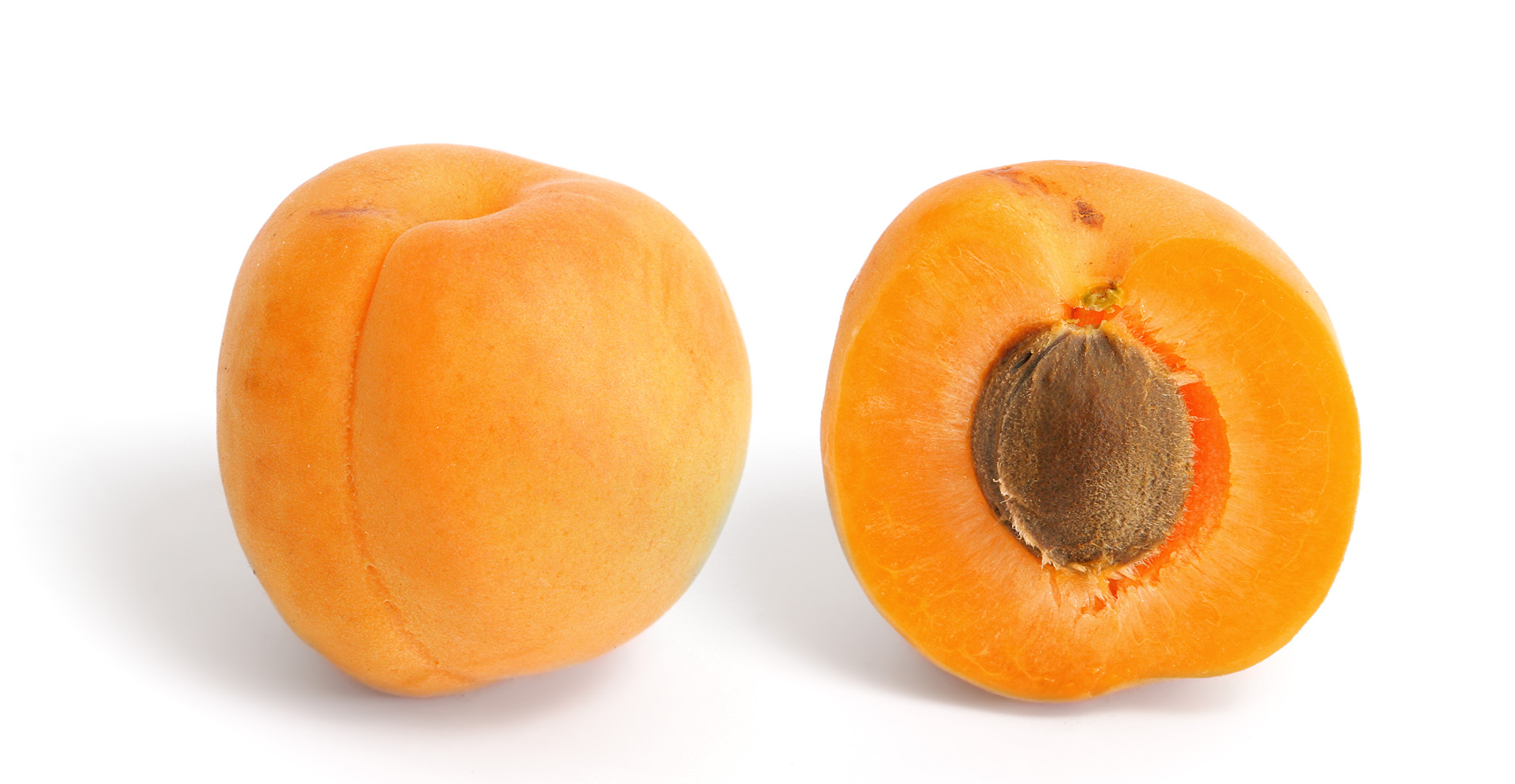An apricot is
a fruit or the tree that bears the fruit. Usually, an apricot tree is from the
tree species Prunus
armeniaca, but the species Prunus brigantina, Prunus mandshurica, Prunus mume,
and Prunus
sibirica are closely related, have similar fruit, and are
also called apricots
Description
The apricot is a small tree, 8–12 m (26–39 ft) tall, with a trunk up to
40 cm (16 in) in diameter and a dense, spreading canopy. The leaves are ovate, 5–9 cm (2.0–3.5 in) long and 4–8 cm (1.6–3.1 in) wide, with a rounded base, a pointed tip and a finely serrated margin. The flowers
are 2–4.5 cm (0.8–1.8 in) in diameter, with five white to pinkish
petals; they are produced singly or in pairs in early spring before the
leaves. The fruit is a drupe similar to a small peach, 1.5–2.5 cm (0.6–1.0 in) diameter (larger in some modern cultivars),
from yellow to orange, often tinged red on the side most exposed to the
sun; its surface can be smooth (botanically described as: glabrous) or velvety with very short hairs (botanically: pubescent). The flesh is usually firm and not very juicy. Its taste can range from sweet to tart. The single seed
is enclosed in a hard, stony shell, often called a "stone", with a
grainy, smooth texture except for three ridges running down one side.
Cultivation and uses
Its introduction to Greece is attributed to Alexander the Great;[8] later, the Roman General Lucullus (106–57 BC) also would have imported some trees – the cherry, white heart cherry, and apricot – from Armenia to Rome[citation needed]. Subsequent sources were often confused about the origin of the species. John Claudius Loudon (1838) believed it had a wide native range including Armenia, the Caucasus, the Himalayas, China, and Japan.

No comments:
Post a Comment